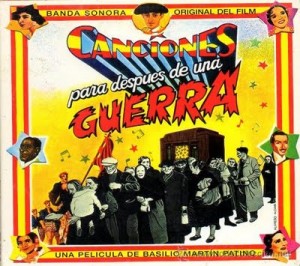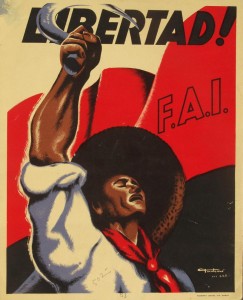 Kalyvas, Stathis N. 2006. The Logic of Violence in Civil War. Cambridge: Cambridge University Press.
Kalyvas, Stathis N. 2006. The Logic of Violence in Civil War. Cambridge: Cambridge University Press.
In this massive study, Stathis Kalyvas argues that violence in civil war complies with a peculiar logic. It’s this logic that explains and fixes together the following four puzzles: The anomaly that one village is utterly brutalized, and the neighboring one spared; why civil wars are particularly violent; the way hardened camp mentality diffuses in local contexts into much more fluid allegiances and identities; discrepancies between macro and micro causes/explanations of war. Kalyvas’ main argument is that it all comes down to how combatant groups try to shape civilian collaboration. His account is not about the origins of civil wars, but their violent course of actions once they already exist.
An important foundational base of this study is that Kalyvas analytically decouples violence from civil war, allowing him to further parse violent practices subsumed by civil war. Of course, civil wars are violent, but what he accomplishes with this distinction is the placement of violence within its own analytical frame.
The main thrust of the book is this: Combatants seek control of populations (regardless of their preferences) by creating credible benefits for collaborators and, more importantly, assured sanction for civilian defectors. Amid the practical opportunities and constraints of irregular warfare as a technology of war, violence is the only way of achieving this kind of control. If indiscriminate violence is used at first, it quickly becomes counter-productive; meaning that selective violence eventually becomes the only sustained way of achieving control. His theory unravels the puzzles mentioned above because:
Unlike existing work, the theory stresses the joint character of civil war violence, entailing an interaction between actors at the central and local levels, and between combatants and noncombatants. This interaction is informed by the demands of irregular war, the logic of asymmetric information, and the local dynamics of rivalries. (6)
Asymmetric information is, for example, the “identification problem,” which refers to the difficulty of distinguishing between civilians and insurgents, leading incumbents with the dilemma of collective punishment or selective violence. In some cases, collective, indiscriminate violence is the only way of bringing out the identification of insurgents, but such practices are not sustainable for maintaining control over populations.
The assumption, which Kalyvas says the empirical evidence bears out, is that control—if it’s strong enough—provides the conditions within which civilians collaborate (often regardless of their allegiances). If one group maintains total control, civilian cooperation is practically guaranteed and the need for violence less relevant, particularly since defection implies almost assured death. In places where one group is ascendant or dominant but full military control is still contested, levels of selective violence are expected to be higher with defectors paying dearly. He summarizes the points with two propositions:
Proposition 1 – The higher the level of control exercised by an actor, the higher the rate of collaboration with this actor – and, inversely, the lower the rate of defection. (132)
Proposition 2 – Indiscriminate violence is counterproductive in civil war. (144)
Simply put, indiscriminate violence is an informational shortcut that may backfire on those who use it; selective violence is jointly produced by political actors seeking information and individual civilians trying to avoid the worst – but also grabbing what opportunities their predicament affords them. In both instances, violence is never a simple reflection of the optimal strategy of its users; its profoundly interactive character defeats simple maximization logics while producing surprising outcomes, such as the relative nonviolence of the “front lines” of civil war. (388)
But discriminate violence is particularly insidious because it necessitates, according to Kalyvas, a degree of civilian cooperation in the form of “informants.” Or as the book description puts it: “Kalyvas specifies a novel theory of selective violence: it is jointly produced by political actors seeking information and individual civilians trying to avoid the worst but also grabbing what opportunities their predicament affords them.” Indeed, Kalyvas contends that civil wars are particularly violent because people opportunistically seize violence to exact revenge or for material gain. This “private” violence entwines with the “public” violence of the warring camps in a particularly brutal spiral, meaning civilians and combatants are jointly complicit in the violence of civil wars. Kalyvas calls this “malicious denunciation” of “intimate violence” the “dark face of social capital” (351).
 On an abstract level, Kalyvas also discusses the ontology of civil war. He measures his account against both a Hobbesian frame and a Schmittian one, finding them both insightful yet inadequate. The Hobbesian view, which he says is echoed by scholars such as Paul Collier and Mary Kaldor, is one of anarchy in the face of the collapse of authority in which the privatization of violence sustains a war of all against all. Whether emphasizing greed or grievance—a dichotomy that Kalyvas’ account rejects—these accounts of new wars fail to encompass the complex and always entwined interactions between public and private violence. The Schmittian view, on the other hand, is one that depicts civil wars as a consummate battle of the political—the irresolvable enmity between friend and enemy. In Schmitt’s ontology, civil war is based “on abstract group loyalties and beliefs, whereby the political enemy becomes a private adversary only by virtue of a prior collective and impersonal enmity” (377). (Of course, Schmitt’s aim was to circumscribe this as a process solely between states.)
On an abstract level, Kalyvas also discusses the ontology of civil war. He measures his account against both a Hobbesian frame and a Schmittian one, finding them both insightful yet inadequate. The Hobbesian view, which he says is echoed by scholars such as Paul Collier and Mary Kaldor, is one of anarchy in the face of the collapse of authority in which the privatization of violence sustains a war of all against all. Whether emphasizing greed or grievance—a dichotomy that Kalyvas’ account rejects—these accounts of new wars fail to encompass the complex and always entwined interactions between public and private violence. The Schmittian view, on the other hand, is one that depicts civil wars as a consummate battle of the political—the irresolvable enmity between friend and enemy. In Schmitt’s ontology, civil war is based “on abstract group loyalties and beliefs, whereby the political enemy becomes a private adversary only by virtue of a prior collective and impersonal enmity” (377). (Of course, Schmitt’s aim was to circumscribe this as a process solely between states.)
Whatever his reading of these political theorists, which I don’t entirely agree with, Kalyvas’ main point is that the private (Hobbes) and the political (Schmitt) are inseparable and mutually interacting. “It is the convergence between local motives and supralocal imperatives that endows civil war with its intimate character and leads to joint violence that straddles the divide between the political and the private, the collective and the individual” (387). Kalyvas sees the difference of these two ontologies of civil war as one between anarchy on the one hand (Hobbes) and polarization on the other (Schmitt).
Kayvas is convinced that the combination of these dynamics plays out with distinct geographical implications in the form of alliances:
Alliance entails a process of convergence of interests via a transaction between supralocal and local actors, whereby the former supply the latter with external muscle, thus allowing them to win decisive advantage over local rivals; in exchange, supralocal actors are able to tap into local networks and generate mobilization. A great deal of action in civil war is, therefore, simultaneously decentralized and linked to the wider conflict. (383)
Alliance is what connects the local “squabbles” to the supralocal cleavages, but neither can be understood in isolation to the other; they are always connected and always in reciprocal interaction. He adds that this process of “normalizing” complex relations between diverse actors across various spatial scales shows that “state building” can be seen as an “externality” of civil war (14, 107, 385, etc.).
Despite the distinction that could be made between “rationality” and “logic,” Kalyvas’ book also reminded me of this quote by Foucault:
What is most dangerous about violence is its rationality. Of course violence itself is terrible. But the deepest root of violence and its permanence come out of the form of the rationality we use. The idea has been that if we live in the world of reason, we can get rid of violence. This is quite wrong. Between violence and rationality there is no incompatibility. My problem is not to put reason on trial, but to know what is this rationality so compatible with violence. (299*)
*Foucault, Michel. 1996. “Truth is in the future” in Lotringer, Sylvère, ed. Foucault Live: Collected Interviews, 1961-1984. New York: Semiotext(e).
